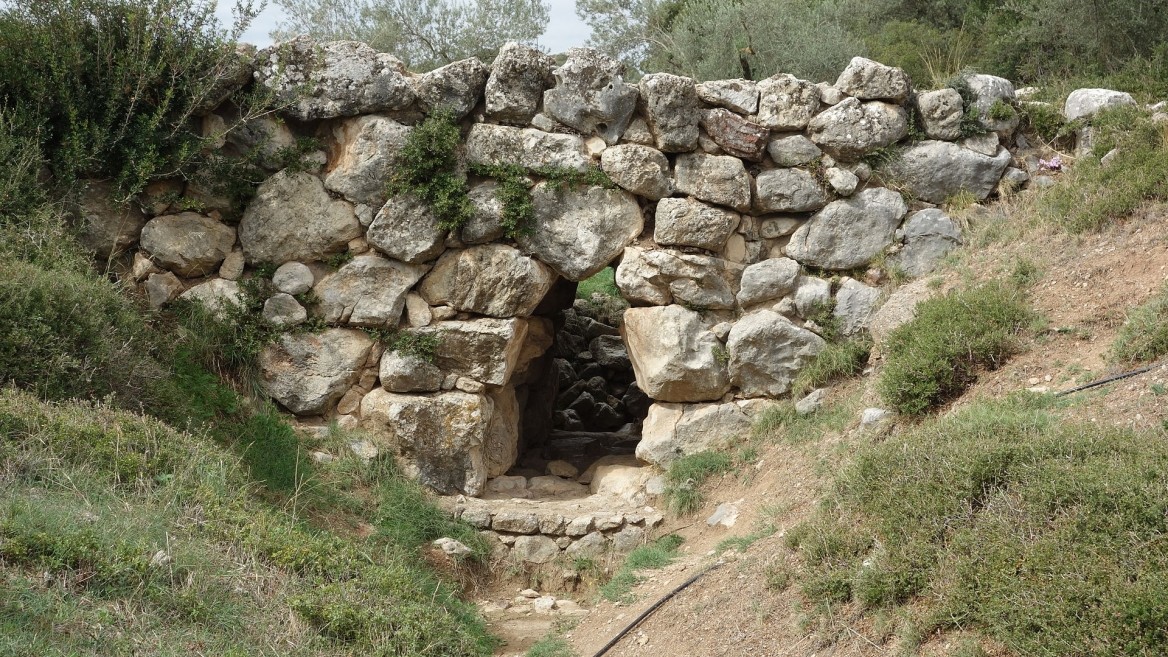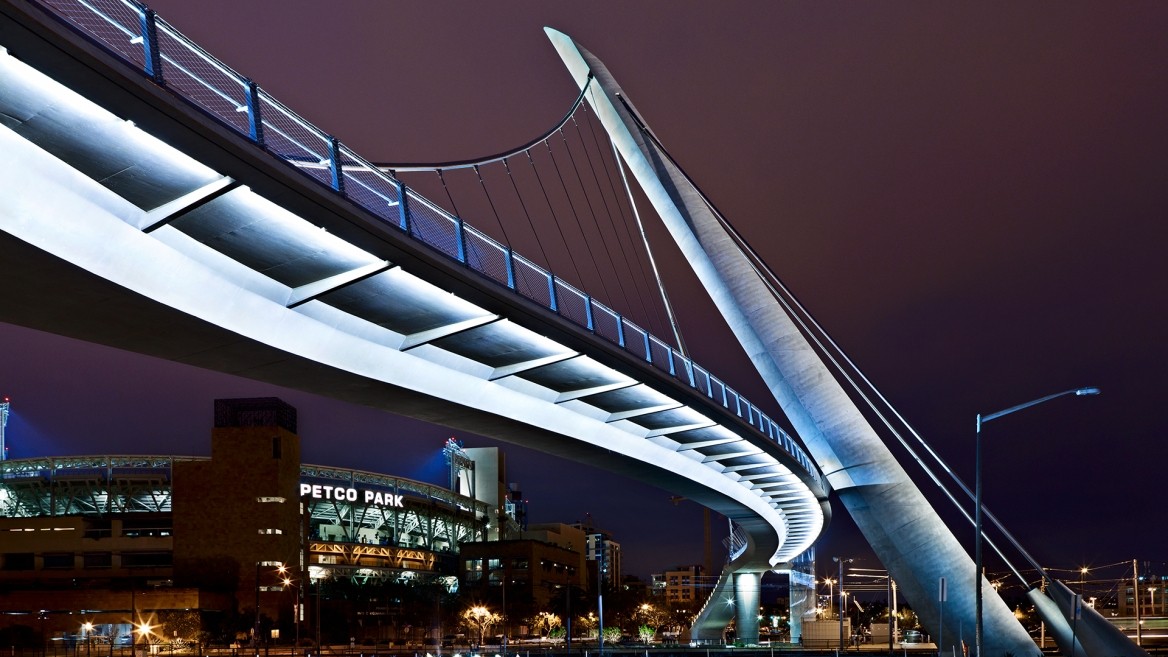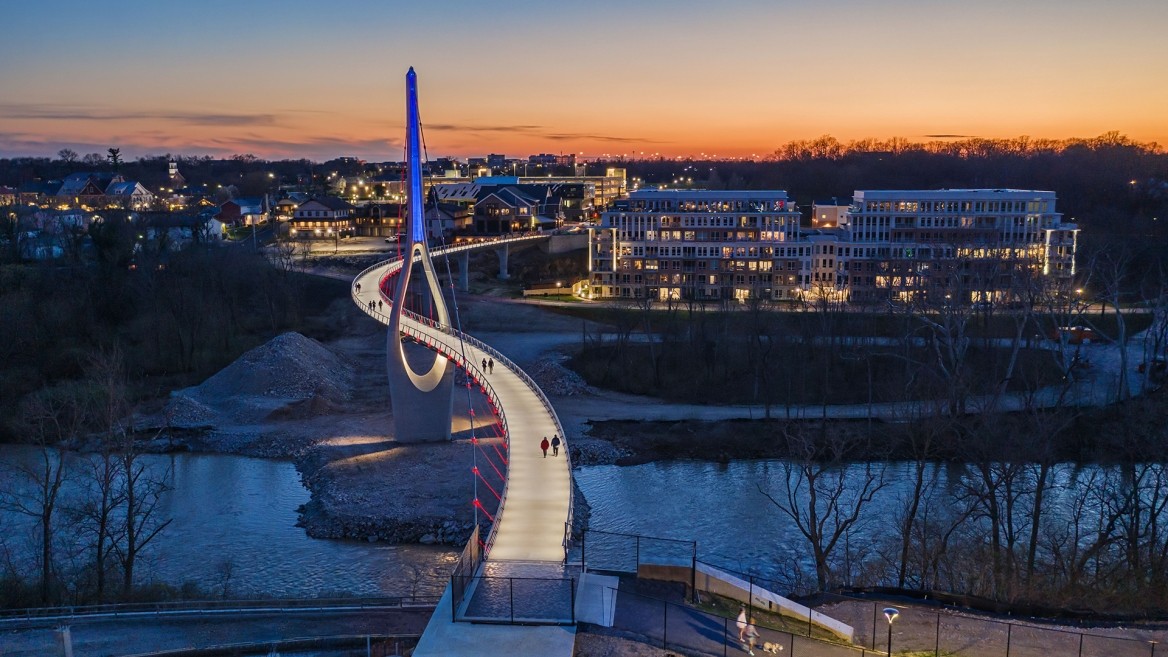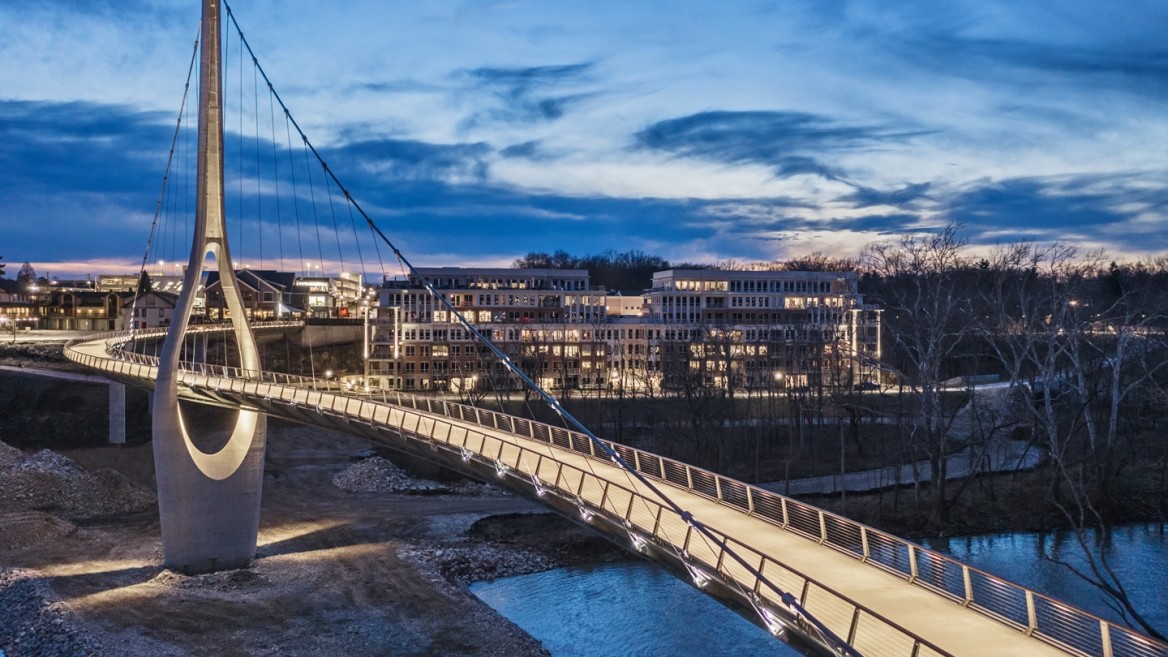The Pedestrian Bridge as a Connection - and a Destination
Image credit: By Flausa123 - Own work, CC BY-SA 3.0, https://commons.wikimedia.org/w/index.php?curid=29927487
Bridges have been a means to connect people in the presence of dangerous or insurmountable obstacles. Whether of wood or stone humans have built structures to provide the means of linking their communities for trade, resources, and travel. The first bridges were unquestionably pedestrian bridges. It is quite ironic that now with the invention of the automobile a bridge must be identified as a pedestrian bridge when it does not accommodate vehicular traffic. Regardless of what it is called, pedestrian bridges have undergone a vast transformation in form and function through history. From modest forms to iconic structures, society has redefined what the pedestrian bridge is and can be.
For much of history the pedestrian bridge connected two points in as short of a distance as possible. Defined by historic travel routes and topography, engineers, before they were known as such, would use whatever means at their disposal to span the gap before them. Aesthetics was rarely, if at all, a consideration in the bridge's layout or design. With limited resources and the possibility of a bridge being destroyed regularly by flood or war, the need to consider aesthetics was low on the priority list for builders.
When art and aesthetics began to be incorporated into bridges, it was an addition to the structure, rather than the purpose of the structure. Dramatic pilasters and sculptures were incorporated into railings and columns. Bridges such as the Rialto and the Ponte Vecchio in Italy were utilized for additional building space which utilized the contemporary architecture at the time. While engineers appreciate the form of classic bridges for their elegance in form and design, there has been a distinct pivot in the purpose in some modern pedestrian bridges. The desire for an iconic structure has become the purpose of the bridge with the function taking a back seat in the design.
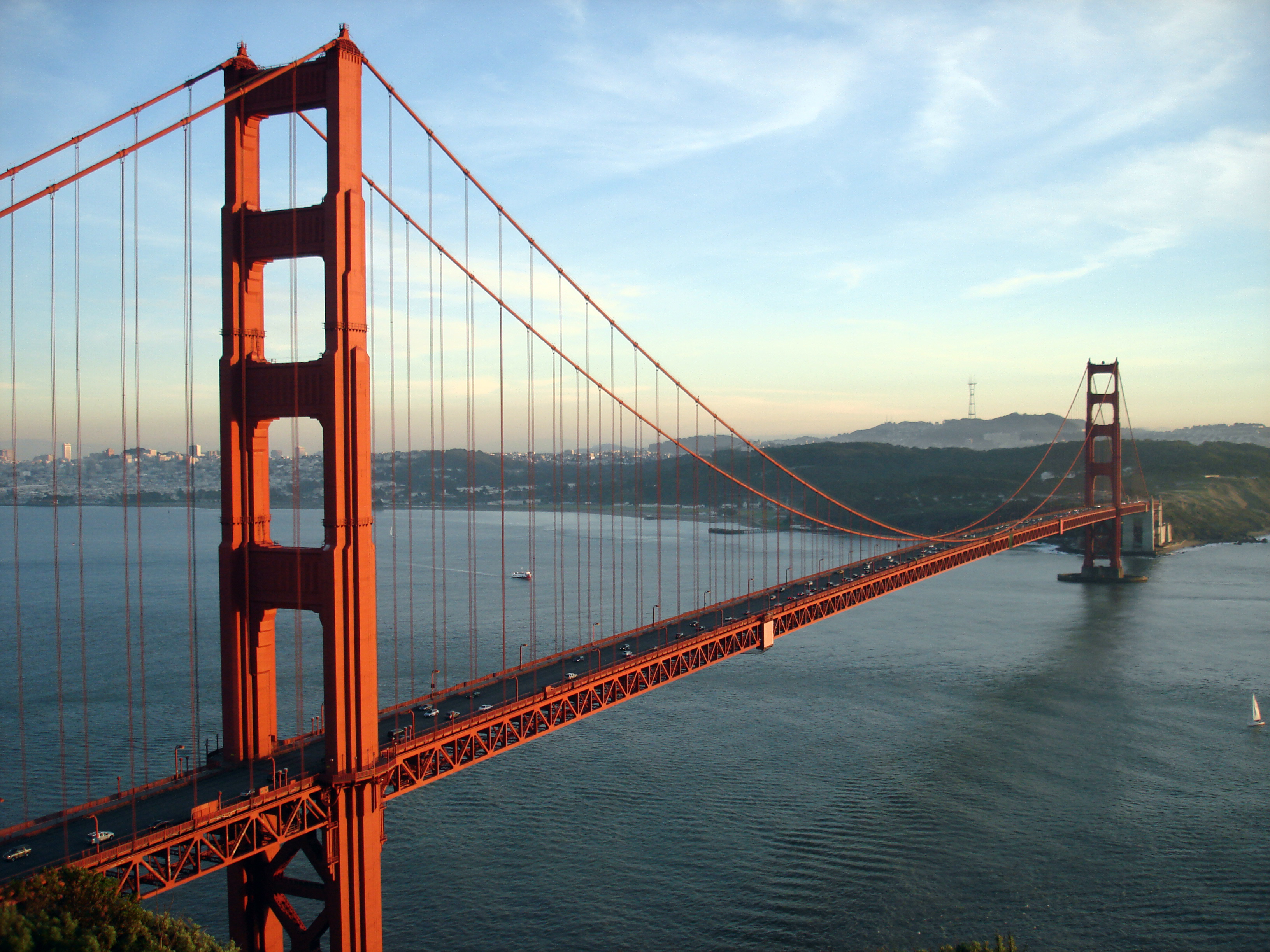
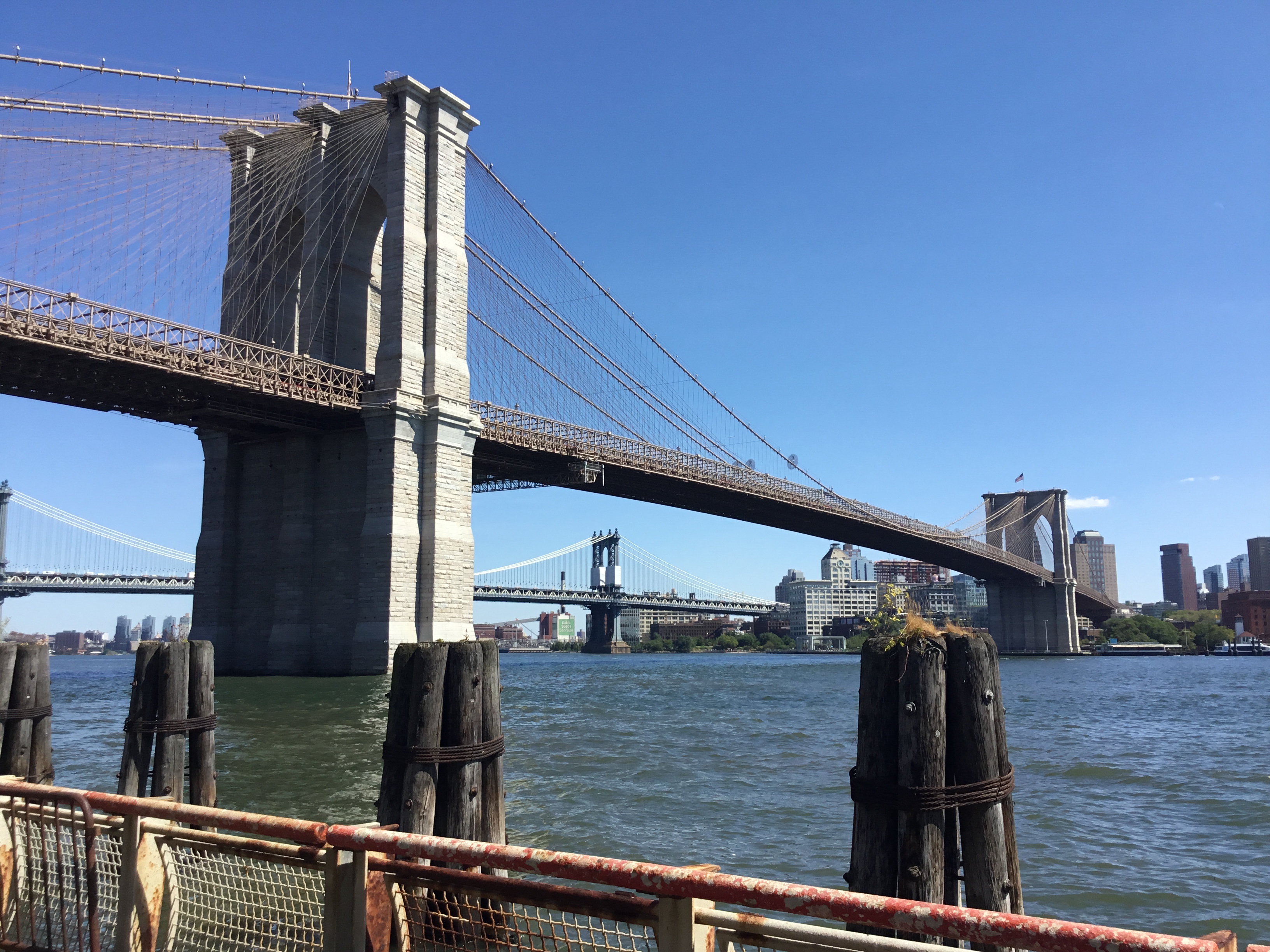
Iconic Desire
Why has this come about? It has become recognized by owners that bridges create a sense of place for a community. This can be readily seen with timeless bridges like the Golden Gate Bridge and Brooklyn Bridge. Each is synonymous with San Francisco and New York respectively, creating a touch stone for the world to identify each city. The reality is that not every city or community has a bay or river to justify the extraordinary effort and expense to construct a mega bridge. Instead, owners have now turned to the pedestrian bridge as the infrastructure element of choice to be the icon of the community.
The pivot in design is based on a fundamental perspective change in the purpose of a pedestrian bridge. The objective with an iconic bridge is to create a place of gathering instead of a place of transport. The intention of owners is for their community to have a bridge that is an experience for pedestrians. A place of interaction with the form of the bridge and the setting the bridge is placed in. The end goal being a bridge that attracts the community and tourists alike to a location of commerce or beauty.
A prime example of this is the Sundial Bridge in Redding, California. Constructed over the Sacramento River in 2004, this cable stayed design by Santiago Calatrava is a bridge which places aesthetic form before utility. The bridge provides users the opportunity to interact with the Sacramento River and the bridge night and day. This iconic bridge is a tourist attraction and brings travelers on Interstate 5 to the downtown of Redding, providing tourists a reason to stop when they otherwise may not have.
A Leap Forward
The new appetite for iconic pedestrian structures has increased with the advancements of computational analysis methods available to engineers and architects alike. Owners in this new wave of pedestrian bridge design have pushed architects to create stunning structures that cannot be ignored and challenged engineers to make the designs work. Architects and engineers have long had the wherewithal to conceive dramatic forms and analyze complex structures, but the ever-increasing access to personal computing power has lowered the barrier to entry for creating, analyzing, and constructing complex geometric elements that make up iconic pedestrian bridges. Modern engineers and architects can leverage this computational power to generate and analyze more complex geometry faster and more accurately than ever before.
Several modern examples of iconic pedestrian bridges designed by TYLin which demonstrate the evolution of leveraging computational power are the Harbor Drive Pedestrian Bridge (San Diego, California), the twin Lusail City Pedestrian Bridges (Lusail, Qatar), and the Dublin Link Pedestrian Bridge (Dublin, Ohio). The Harbor Drive Pedestrian Bridge is a signature pedestrian crossing in San Diego that was designed early in the evolution of computational design tools. The architect's model was fully realized in 3D and information from this model was useful in creating 4D finite element models (FEM) that closely tracked time dependent effects as the 4th dimension. Additional 3D models of specific complex elements were derived by the design engineers to ensure constructability and mitigate conflicts but overall, the process mostly relied on brute force and plan preparation done using conventional 2d methods. At the time, this level of effort in design was reserved for very few signature projects being developed. Fast forward several years to the design of twin Lusail City pedestrian bridges that were a centerpiece of the past World Cup in Qatar. While the architectural and FEM models were the same as described for Harbor Drive, full structural 3D models of the bridges were developed containing all elements constructed in the bridge. These were used heavily in plan production and were instrumental in minimizing geometric conflicts. This level of effort was, at the time, still reserved for the select few projects, however, the improvement in the development of models was marked. Moving ahead to the design of the Dublin Link pedestrian bridge more advances were realized. Architectural, FEM, and 3D Structural models were all used heavily as in Lusail, but by this point the design methodology had evolved such that the various models could talk to each other. Geometry from the architectural models informed the structural 3D models and data from them was used in part to generate the FEM models and produce portions of the plans. This represented a seismic shift in the value of each of the models and, more importantly, reduced the ramifications of dreaded late-stage changes. The Dublin Link served as a springboard for this type of design ideology within TYLin to the point where all signature projects utilize linked models, and our most complex projects have FEM models and plan production driven from a single parametric 3D model. This progression highlights steps the industry has taken in advancing computational design to keep up with, and in some instances drive, desire for more iconic structures.
The Next Step
Like how engineering and architectural design have advanced with technology, so too has construction and fabrication. Although the advances in design technology seem to be well on their way while advances in fabrication and construction technology are still in their infancy. Most of the important advances in bridge technology throughout history have been due to economic necessity. Expect the same to be true as we move into the future. Increased desire for signature structures is happening faster than the increase in budgets to pay for them. The same way design technology has allowed for efficiencies in the analysis and design of iconic structures, construction technology can make way for more efficient fabrication and construction of these structures. While there are many construction technologies to be excited about, 3D printing jumps to the foreground. The winning concept for the 2021 AISC Forge Prize was a full-scale pedestrian bridge 3D printed in place over a canyon in San Diego. While technology won't allow that just yet, we aren't far off. The additive robotic manufacturing company MX3D has already successfully printed a steel pedestrian structure in the Netherlands and Autodesk in collaboration with DAR Group has prototyped numerous 3D printed GFRP pedestrian structures. There are other successful 3D printed structures out there as well. The next step in advancing iconic pedestrian bridges will likely come from 3D printed construction and manufacturing which will allow architects to pursue more ambitious and organic designs, leaving engineers with more challenges to solve.
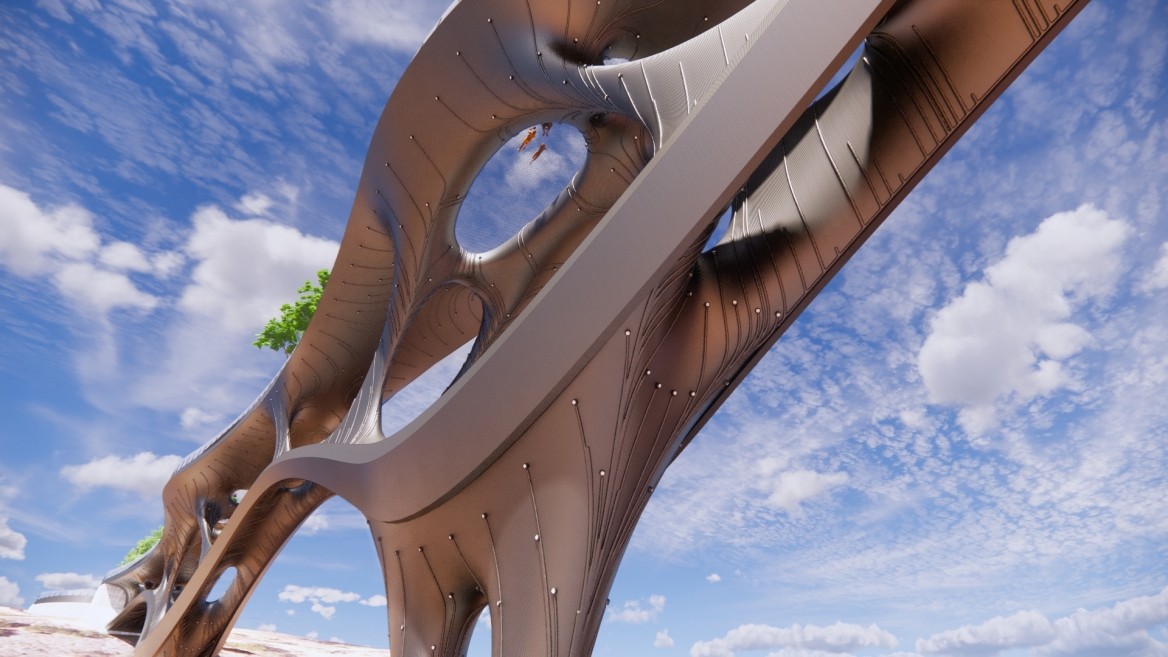
Conclusion
At their core, bridges provide connection. The initial driver for bridge construction was connecting a community with their basic needs. Societal evolution provided the next step of bridge construction providing convenience, bridging gaps so a neighborhood could be a seamless whole. Over the past several decades the newest driver has been the desire to connect people with the bridge and surrounding environment. To create a place of experience where the bridge itself is artwork which compliments the setting it is constructed in. The iconic pedestrian bridge has become a place of being instead a place of passing.
This new level of design is sure to challenge engineers and architects in the coming years in unexpected ways. Already, designs are pushing the envelope such that what is defined in contemporary design codes does not apply and engineers must rely instead on first principals to solve engineering problems. Juxtaposed with this is the use of advanced FEM and parametric modeling to understand and define the structural behavior. Add in the limitless possibilities provided by 3D printing and the idea of what is possible is shattered completely. How engineers adapt to this brave new world will shape the future of iconic bridges and what is constructed for generations to come.

Jeremy is a professional bridge engineer who provides outside of the box solutions to unique design problems. With a passion for client care, negotiation, and staff mentorship, he is responsible for project management and operations for the Bridge Sector.

Bobby is a Lead Bridge Engineer specializing in parametric modelling and design of unique and complex bridges. He pushes the capabilities of design technology to streamline bridge analysis and design, especially for complex structures and geometries.
